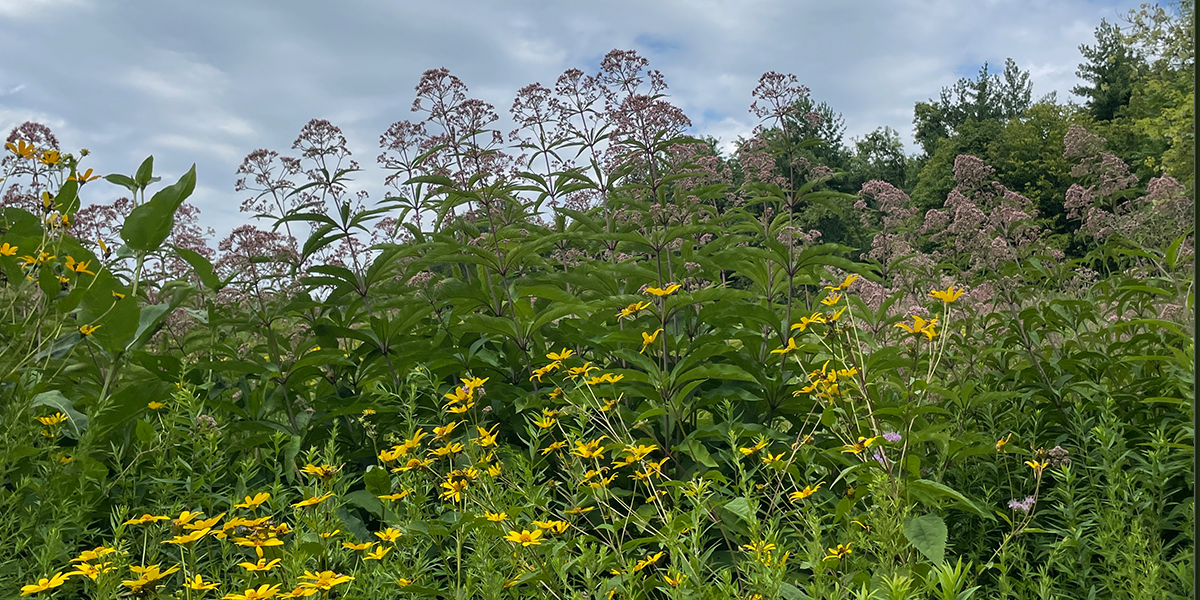Transform your lawn into a native plant sanctuary
- May 31, 2023

Now that the weather is warm, there is lots of time to spend outside gardening and working on your lawn. Whether you have a huge area to work with or a small section, you can transform your lawn into a safe haven for local wildlife by planting native plants.
Why should you consider planting native species?
- They grow well and generally require less care
- They support local wildlife
- They are beautiful, with showy flowers and gorgeous fall foliage
Now that we've, hopefully, convinced you to plant more native species in your lawn, you may be wondering how to do it.
Before diving into replacing your current landscape with native plants, you should do some research. Ask yourself, how much sun or shade does my yard get? What soil conditions does it have? How much space does my yard have? Once you have an idea of that, then you can decide the method you want to take to replace your non-native plants with native ones.
What options do you have to begin converting your lawn?
- Sheet mulching
- Find the area in your yard you want to replace non-native plants with native ones. Lay down cardboard on top of them and mulch over the cardboard, several inches. This keeps grass and weeds from growing through. Eventually, the cardboard and weeds decompose and you can plant natives in place of them. This method requires patience!
- Dig out unwanted areas
- Get down and dirty and start digging out unwanted areas of your lawn. Be sure not to dig too deep. Once you've gotten rid of the unwanted plants, replace them with native ones.
- Lawn dethatching and overseeding
- Mow the lawn 1.5 - 2 inches. Then, dethatch with a thatch rake, dethatching machine, or power rake and then collect the thatch. You will also want to lay down compost. Once your soil is prepared, put down the new seed and mix the seed into the compost layer.
- Motorized sod cutter
- This method is a bit pricier. Rent or buy a motorized sod cutter, which will expose the ready-to-plant soil beneath. Then, plant your native seeds! This is good for the average lawn.
- Herbicide
- This method may be controversial for some. If you do not want to use chemicals, this method isn't for you. If you are looking for a faster way to convert your lawn, you can find herbicide that will get the job done, but won't persist for very long in the soil.
What are some native plants that I can plant in my yard?
- Solidago
- Milkweed
- Asters
- Spicebush
- Goldenrod
- Violet
- Coneflowers
- Paw paw
- Black-eyed Susan
- False indigo
- Joe pye weed
- Geranium
Where can I buy native plants?
- Civic Garden Center - they have place sales during certain times of year
- Cincinnati Nature Center
- Cincinnati Zoo
- Deeply Rooted Landscapes (Dayton, OH)
- Keystone Flora
- Izel Native Plants (online)
- Prairie Moon Nursery (online)
- Find more plant resources at midwestnativeplants.org
Sources:
Landscaping for Wildlife with Native Plants | NC State Extension Publications (ncsu.edu)
Native Plant Lawn Ideas: How To Replace Your Lawn With Native Plants (gardeningknowhow.com)
The 3 Best Ways to Replace Lawn with Native Plants (rewildingmag.com)
7 Ideas to Transform Your Lawn with Native Plants (saferbrand.com)
Sheet Mulching: How to Smother Weeds, Build Soil & Conserve Water the Easy Way - Modern Farmer
